-
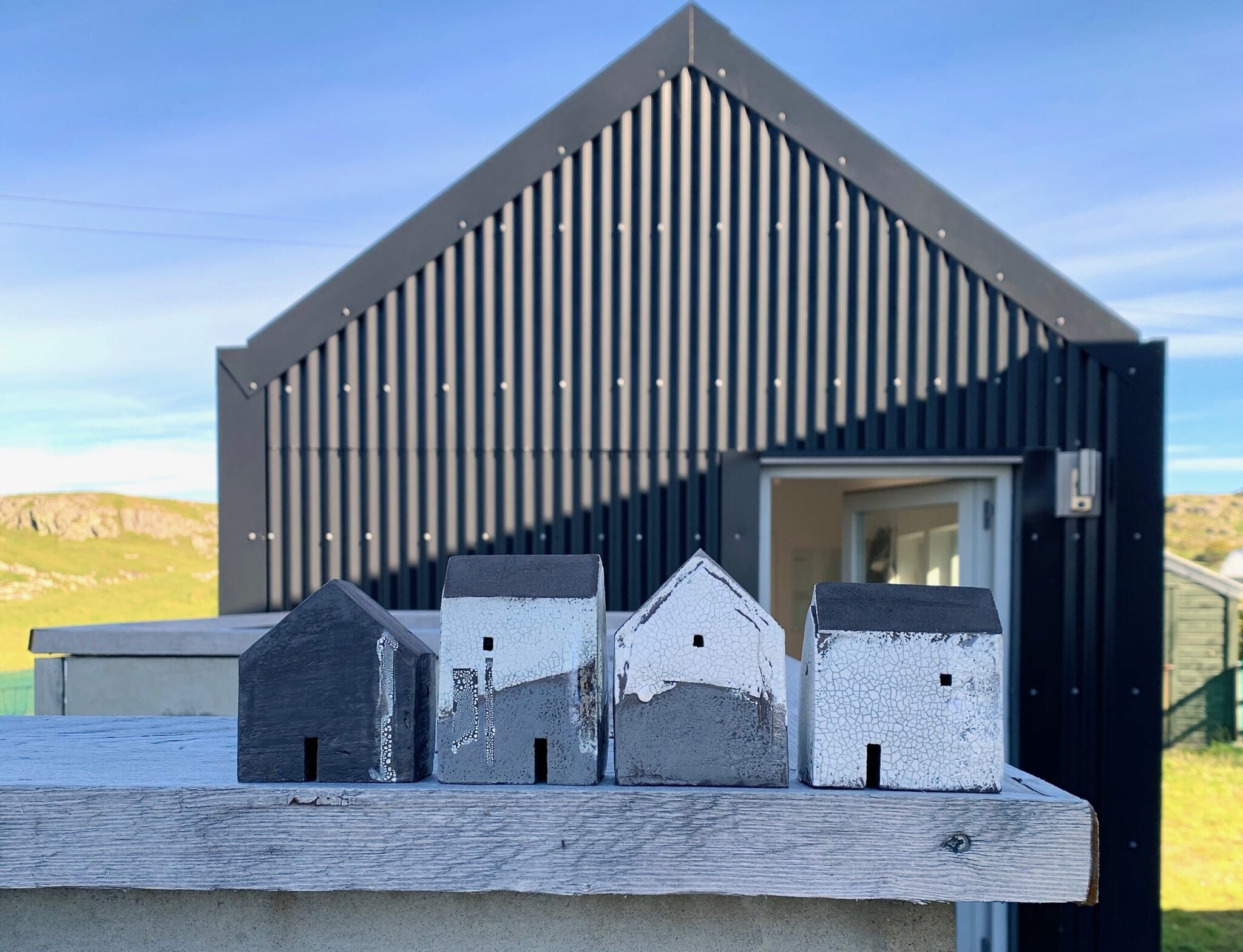
Rowena Brown: Ceramic houses, in sets of four. Hand sculpted in black clay and earthenware fired. Each piece is individually made, this set is approximately 9.5 cm in height. There’s something about Rowena Brown’s ceramic houses that seems to speak to people at a very emotional level. A number of years ago journalist David Nicholls, the then editor of the Telegraph Magazine’s Design Notebook, kindly gave one of our shows a mention and featured Rowena’s work a few weeks before our show. We were absolutely delighted with the coverage but what pleased us more, was the fact that people had travelled from near and far to see the houses. They visited the show literally clutching the torn out article featuring Rowena’s work, such was their attachment to the work.
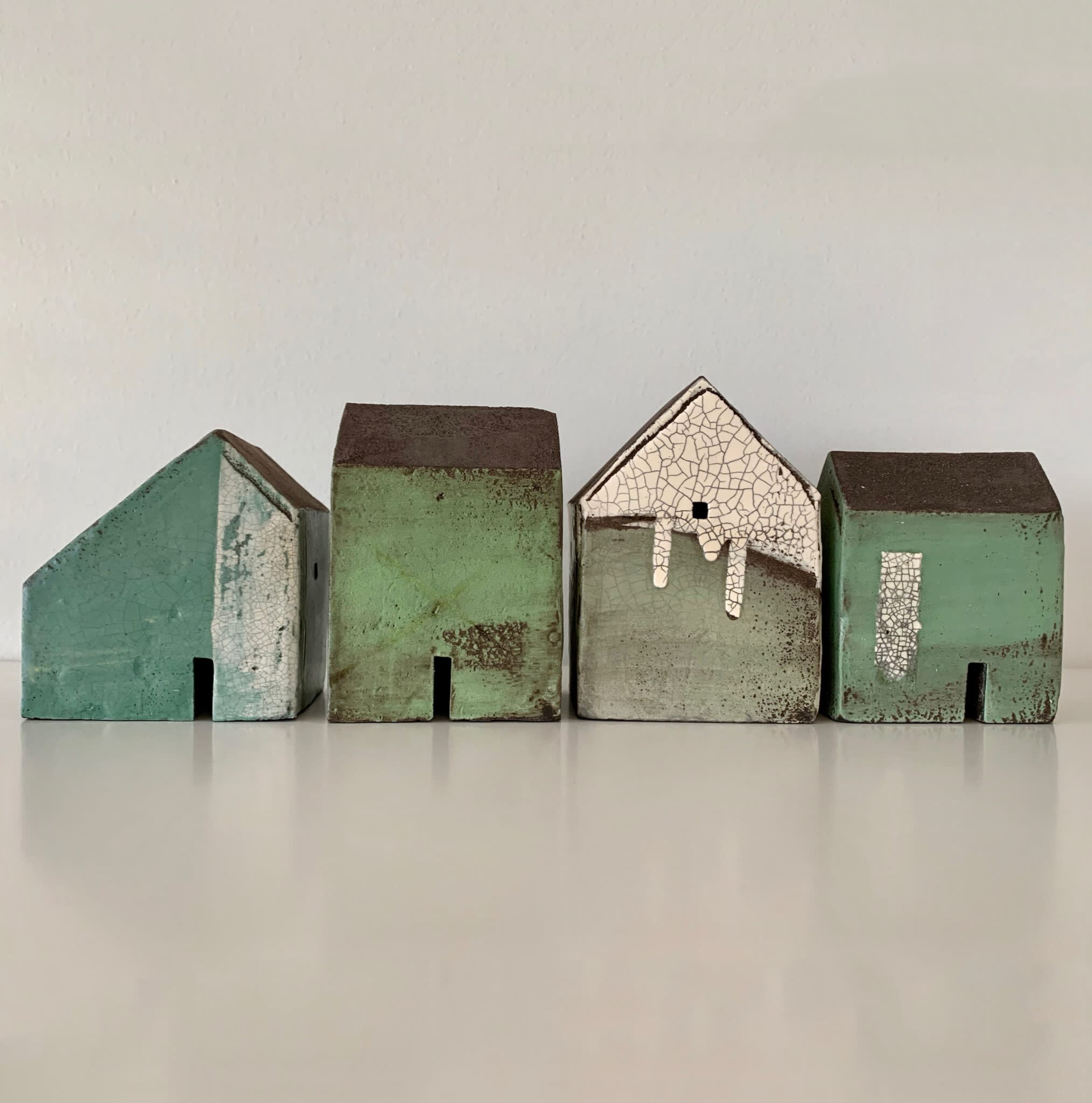
Rowena Brown: Ceramic houses, in sets of four. Hand sculpted in black clay and earthenware fired. Each piece is individually made, this set is approximately 10.5cm in height. The same thing happened at one of our exhibitions in Somerset when a holidaymaker from Japan made the journey from her hotel in London via train, bus and on foot just to see Rowena’s work. This was no mean feat, considering the show in South Somerset was situated in the middle of the countryside, down a single-track road, half a mile from the main road!
When we first saw Rowena’s evocative houses at her studio, we had the same reaction. The houses evoke a strong sense of reminiscence and contemplation and we just couldn’t get them out of our heads once we’d seen them.
We’ve now worked with Rowena for over ten years and her houses continue to strike a chord with our clients. Although she was based in London for 20 years, Rowena has recently made the move to the Isle of Iona in the Hebrides, Scotland, having built her own house and studio on the most beautiful plot of land overlooking the sea. Whilst this might seem rather remote for some, a quick look at her Instagram feed says it all. Rowena has probably one of the most envy-inducing feeds ever regularly featuring the far-reaching views over the sea from her studio. It must be the most inspirational place for an artist to work from and we are so looking forward to being able to visit. This week, however, we will just travel virtually, taking you with us as as we find out how Rowena has adjusted to island life.

Rowena Brown in her new studio on the Isle of Iona CF: Has moving from London to a place with so much outdoor space influenced the scale or themes of your work at all?
RB: I’m sure it will. I have been intending to introduce more elements of the natural world into my work. Apart from the rock-like sculptural plinths that some of my buildings perch precariously on, all my work has used man-made subject matter, albeit ravaged by the effects of environmental and climatic damage. Coastal erosion and weathering have been constant visual themes. I am surrounded by the sea here and am interested in depicting rising sea levels in my work.



CF: With a huge attachment to Iona in the Hebrides throughout your life you finally made the permanent life-changing move to the island several years ago even building your own house and studio which is an amazing feat. How has this move affected and influenced your work?
RB: My work actually influenced my house and studio. Designed by architect Mary Arnold-Forster, the two buildings are characteristically simple in form and the back elevation of the house is punctured sparsely with small windows, like one of my ceramic house sculptures.
The hugely emotional time around the building of a new a home and relocating there informed my first house on rock sculptures. Such times of upheaval resonate in feelings of instability and precariousness, underpinned by a determination to find something to provide strength and be supported by.
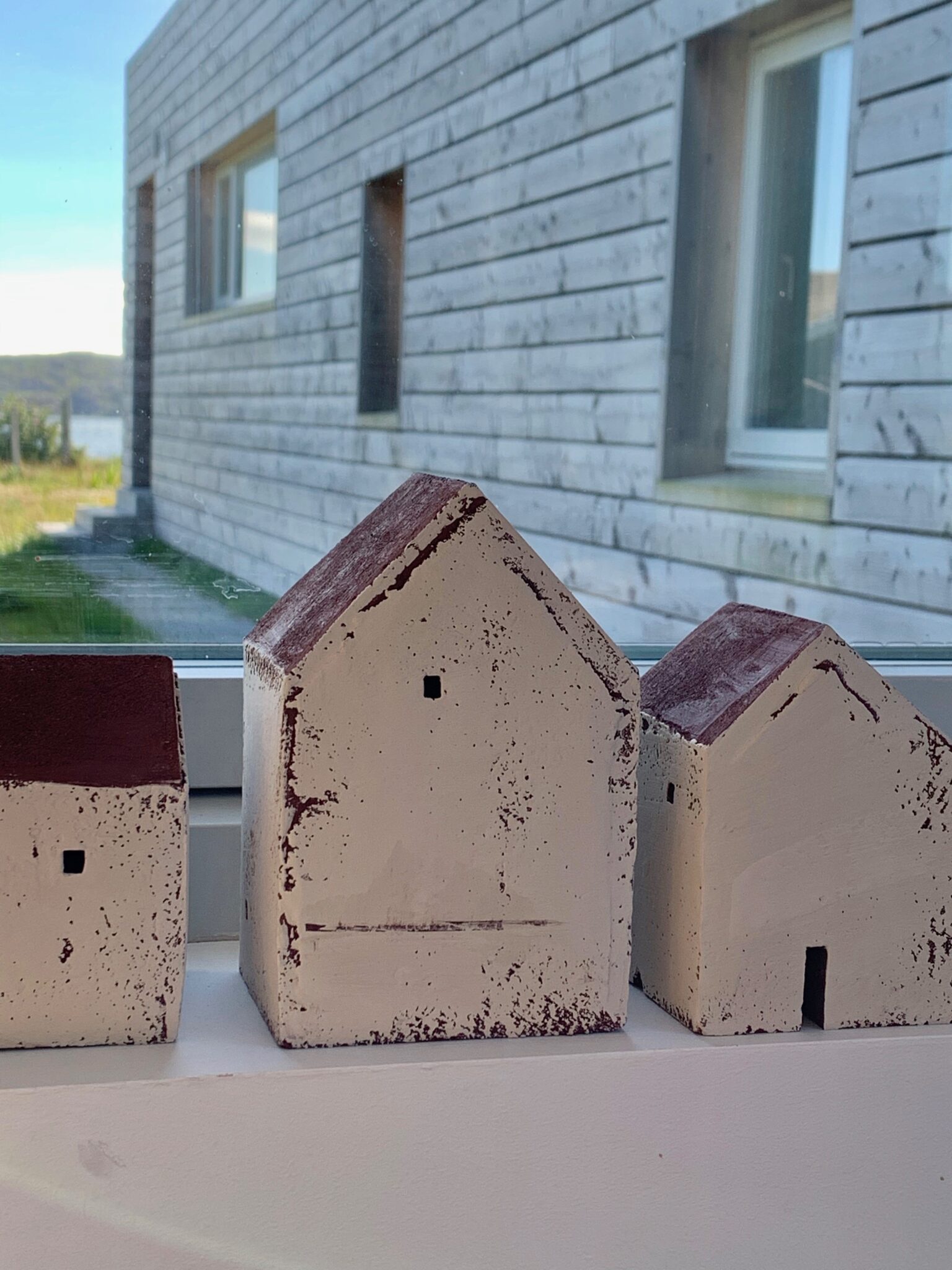
Rooms with views – ceramic houses by Rowena Brown
CF: How have you been getting on in the lockdown Rowena?
RB: As my workload decreased I decided to seize this pause in normal life to focus on my new environment and to consider where my work will go from here. I have begun to develop work from a sketchbook of new ideas that I made in the few months I had between homes and without a studio.
We’ve had such amazing weather and I’ve spent a lot of time outdoors – walking, taking photographs and creating a garden on a plot of sand.
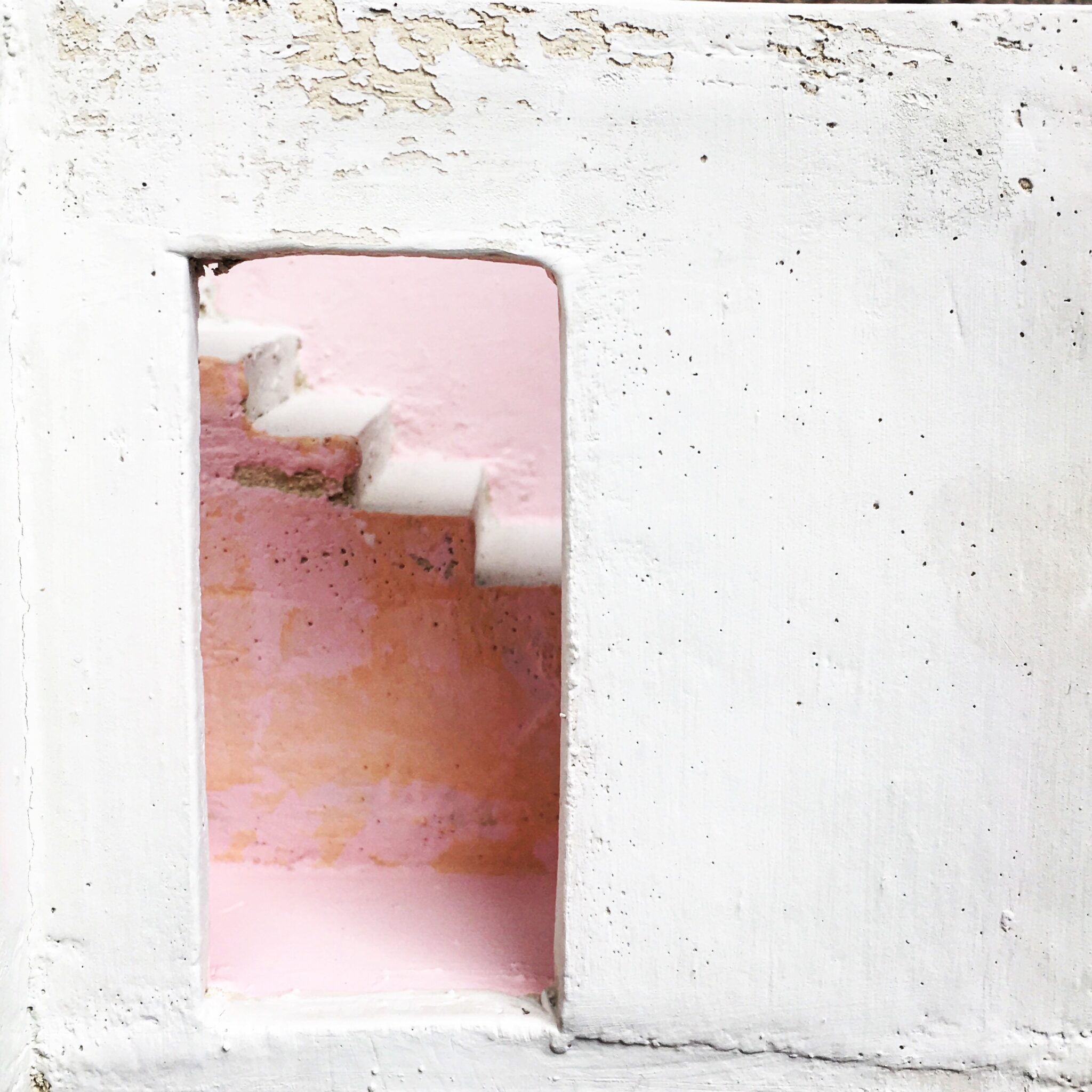
A sneak peek of work to come from Rowena
CF: Our clients can’t get enough of your house sets, each one so individual in tone, shape and texture. How did you start making these? How do you put the sets together?
RB: I was making more complex architectural sculptures, then as I started experimenting with raku and smoke firing I pared these down to more simple forms, each sculpted from a single block of clay so that they were more robust to survive the fast-firing they were subjected to.
I make the houses in sets of four, but when they emerge from their final firing as individuals I reassemble the forms and colours into their final cohesive grouping, this can take a day or so.

Rowena Brown: House on Rock with Pool – Earthenware, hand-built architectural form, coloured with slips, part-glazed, 2020 . Shown here with Woods 8 painting, Woods Dusk by Kate Sherman and still life bottle by Akiko Hirai.
CF: Abandonment, the aftermath of disaster, the safety of home and childhood memories are common themes for you. Is this narrative an important part of your work?
RB: Yes, I was initially drawn to the motif of the derelict building, abandoned abruptly following environmental or manmade disaster as a vessel for reminiscence. Each carries an individual story of tragedy, of sudden uprooting, or of freedom at the cost of a secure home life.
The sets of houses are more archetypal and have emerged as powerful symbols of self. They unlock a recognition of an essential human motivation, to be both individual and free, but also to feel as if we belong. My aim is to stimulate an emotional response, but as the onlooker is drawn in a narrative may also emerge of memory of place.

Rowena Brown: Four Houses on Rocks, 32cm high, 2020 CF: Can you talk more about your work process?
RB: I sculpt the forms, usually out of a block of heavily pigmented clay, sometimes I slice and join slabs to construct larger forms. I then paint onto and partially scrape off various slips and glazes – I really enjoy the painting and decoration part of the process, making each piece individual. I fire the pieces at a low temperature in my electric kiln. I try to live a low carbon life, I don’t drive a car or fly and my house is low energy, so I follow this through in my work by using less energy to fire my work and to produce work that will ultimately return to its initial state.

Rowena Brown – Ceramic houses, in sets of four. Hand sculpted in black clay and earthenware fired. Each piece is individually made, this set is approximately 11.5 cm in height.
Featured alongside painting Beach 5.6 by David Edmond CF: Individually the house sets look isolated but together they form their own community. Have you found this to be the case in real life in Iona?
RB: I think that my preoccupation with isolation and community drew me to relocating to a remote island and living on Iona epitomises that dichotomy. Apart from a row of conjoined cottages in the village, the island is dotted with individual houses. I like having my own autonomous space with far-reaching sea views, but it is a comfort to see the lights on in a neighbour’s house on a winter’s evening.
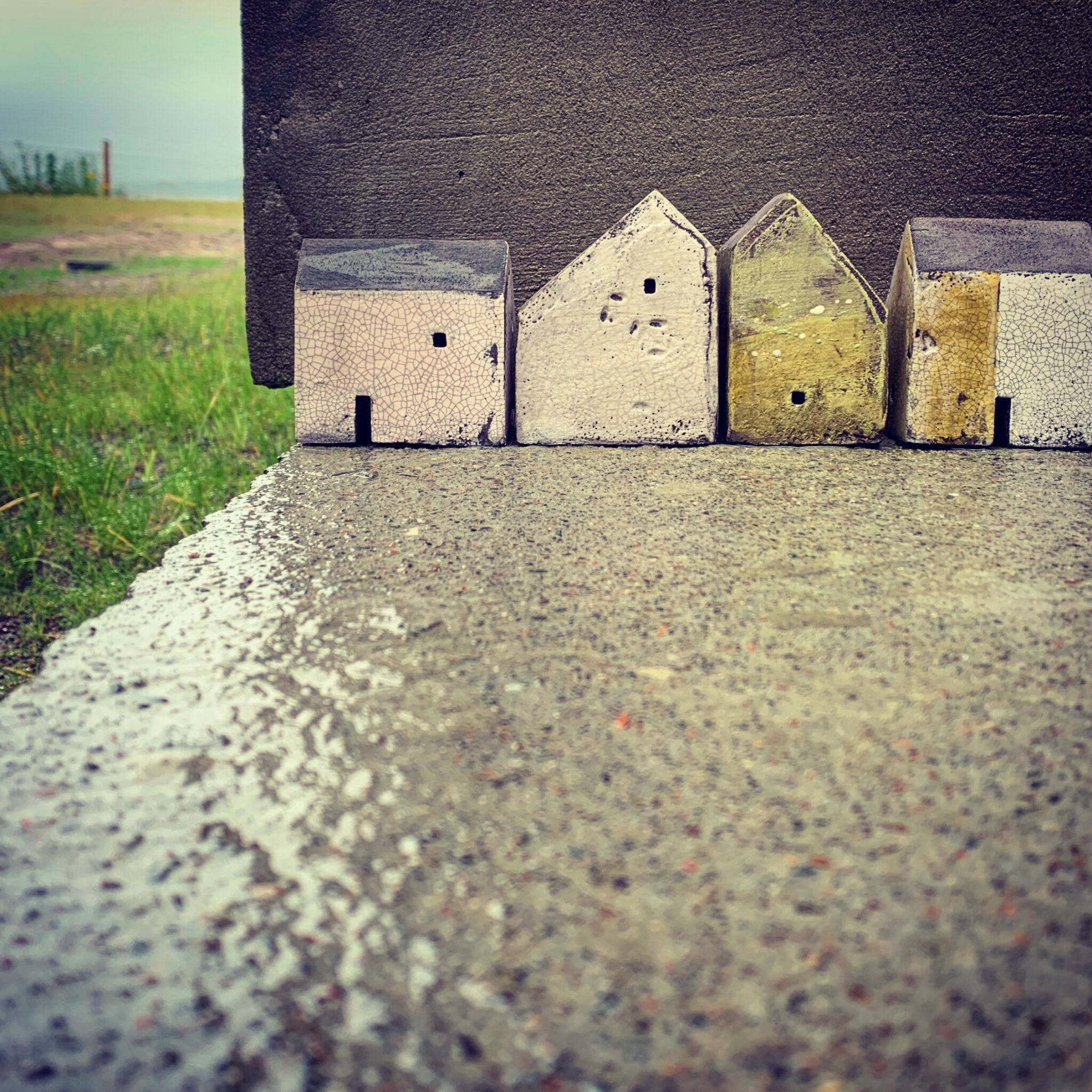
Rowena Brown: Ceramic houses, in sets of four. Hand sculpted in black clay and earthenware fired.
Each piece is individually made, this set is approximately 8 cm in height.
CF: You Studied Fashion at Central Saint Martins before studying fine art. Has this training informed your work at all, maybe in your sense of construction and colour?
RB: Some of the first structures that I made with clay were clothing and shoes, they were made to look discarded, to carry an individual story of abandonment and loss by enduring as empty vessels.
My work in fashion design was concerned with aesthetics, form and colour, but was also directed by the need to make desirable and saleable items. I used my time studying fine art to deepen the way my work explores concerns. I feel both these approaches have informed my ceramic work.
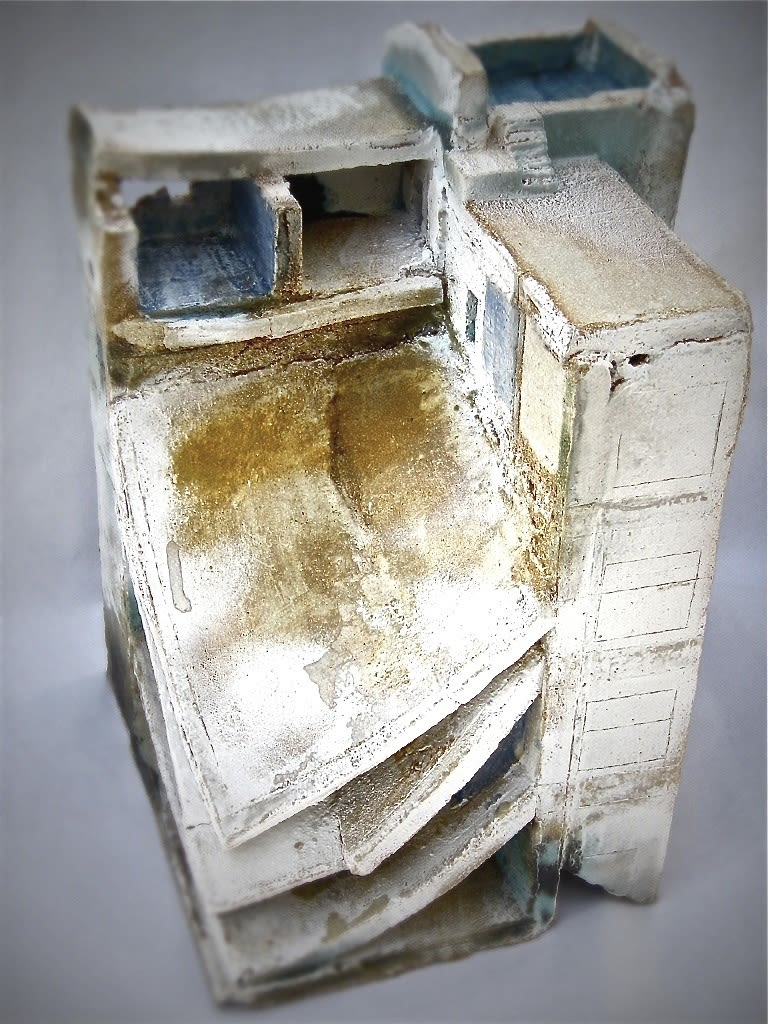
A peek through the archives of Rowena’s wider sculptural work
CF: You have produced beautiful larger work of abandoned swimming pools, empty roofless spaces, where do you get your inspiration for these?
RB: Once symbols of modernity, progress and community, the lido pools are drained of water and life, the buildings in their destruction lie empty and exposed.
The inspiration behind this work comes mainly from media images showing the aftermath of man-made disruption and environmental disaster, I also look at photographs I have taken of weather-worn and derelict structures for inspiration.
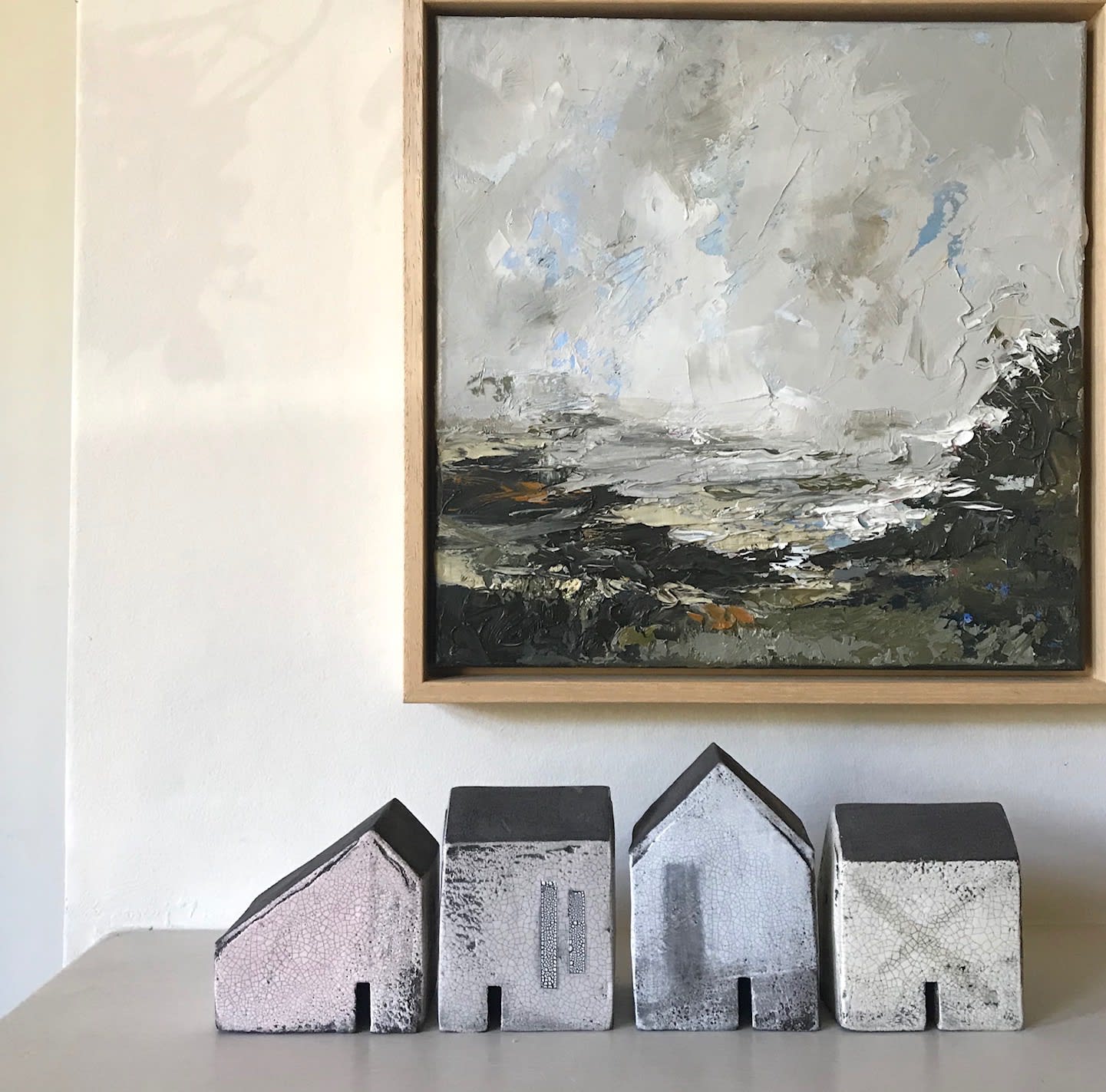
Rowena Brown: Ceramic houses, in sets of four. Hand sculpted in black clay and earthenware fired. Each piece is individually made, this set is approximately 10 cm in height.
Shown here alongside Sea Mist painting by DJ LowrieCF: Have you any plans for new work in the future?
RB: Yes, I plan some groups of tall sculptures, constructed so that the constituent parts align with one another. These will be larger in scale than most of my current work and will represent a progression and deeper exploration of current themes. I am beginning to introduce some visible inside space into some pieces suggesting the exposure of the interior self.
CF: We look forward to seeing those Rowena. Thanks for talking to us today.